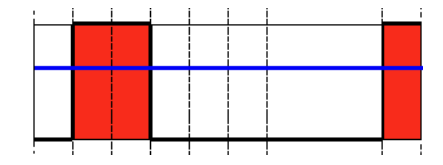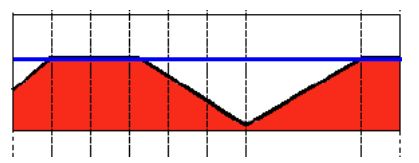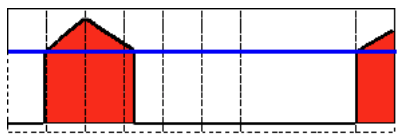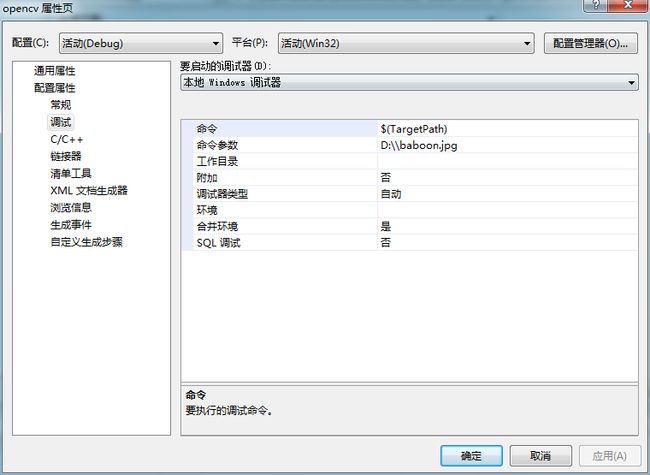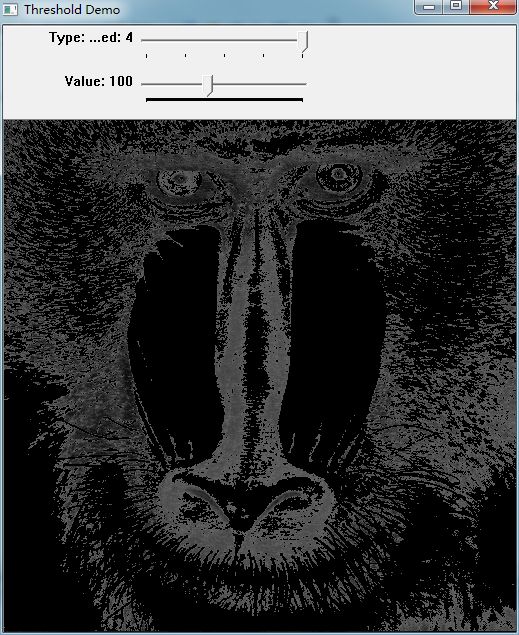opencv-基础阈值操作
opecv带有阈值函数threshold。主要完成5种类型的阈值操作。
1.Threshold Binary
蓝线为阈值
2.Threshold Binary, Inverted
3.Truncate
4.Threshold to Zero
5.Threshold to Zero, Inverted
实现代码如下所示:
#include "opencv2/imgproc/imgproc.hpp"
#include "opencv2/highgui/highgui.hpp"
#include <stdlib.h>
#include <stdio.h>
using namespace cv;
//全局变量
int threshold_value = 0;
int threshold_type = 3;;
int const max_value = 255;
int const max_type = 4;
int const max_BINARY_value = 255;
Mat src, src_gray, dst;
char* window_name = "Threshold Demo";
char* trackbar_type = "Type: \n 0: Binary \n 1: Binary Inverted \n 2: Truncate \n 3: To Zero \n 4: To Zero Inverted";
char* trackbar_value = "Value";
//函数声明
void Threshold_Demo( int, void* );
int main( int argc, char** argv )
{
//加载彩色图像
src = imread( argv[1], 1 );
//将彩色图像转变为灰度图
cvtColor( src, src_gray, CV_RGB2GRAY );
//创建用于显示结果的窗口
namedWindow( window_name, CV_WINDOW_AUTOSIZE );
//创建两个跟踪条分别用于选择阈值处理类型和阈值大小
createTrackbar( trackbar_type,
window_name, &threshold_type,
max_type, Threshold_Demo );
createTrackbar( trackbar_value,
window_name, &threshold_value,
max_value, Threshold_Demo );
//调用函数进行初始化
Threshold_Demo( 0, 0 );
//等待用户按键‘ESC'结束程序
while(true)
{
int c;
c = waitKey( 20 );
if( (char)c == 27 )
{ break; }
}
}
//初始化程序
void Threshold_Demo( int, void* )
{
/* 0: Binary
1: Binary Inverted
2: Threshold Truncated
3: Threshold to Zero
4: Threshold to Zero Inverted
*/
threshold( src_gray, dst, threshold_value, max_BINARY_value,threshold_type );
//显示处理结果
imshow( window_name, dst );
}
实验结果:
配置如图所示,同时给出了原始图像。
阈值为100,5种阈值处理类型的结果如下图所示。
